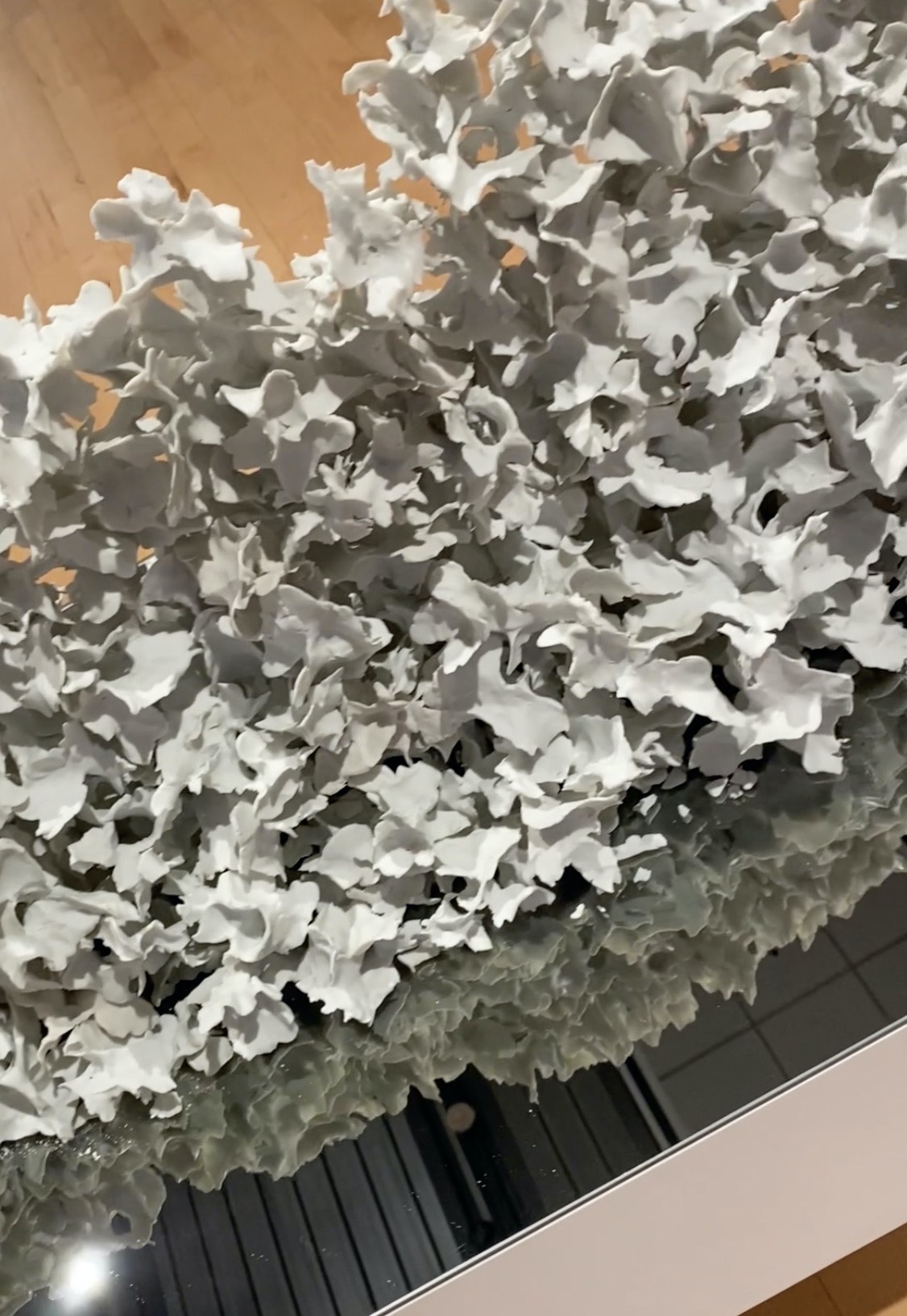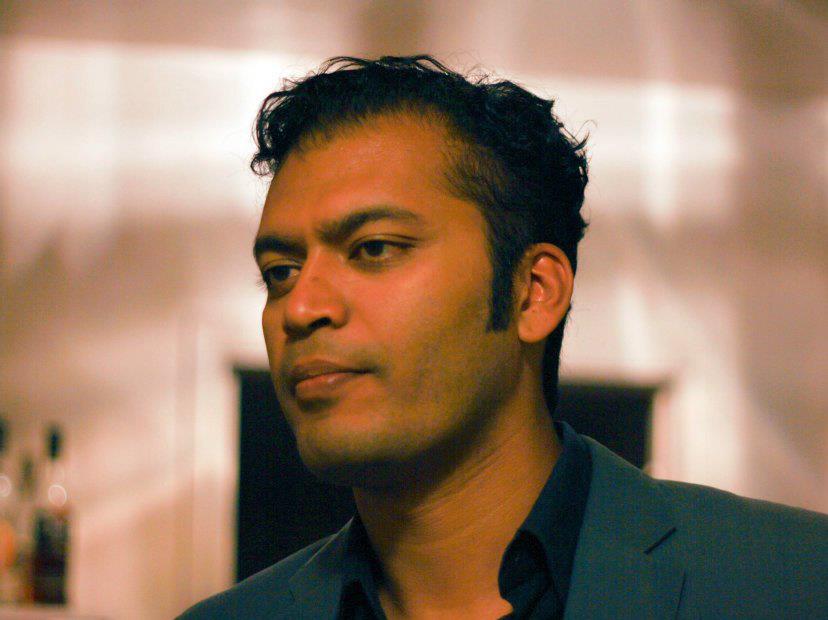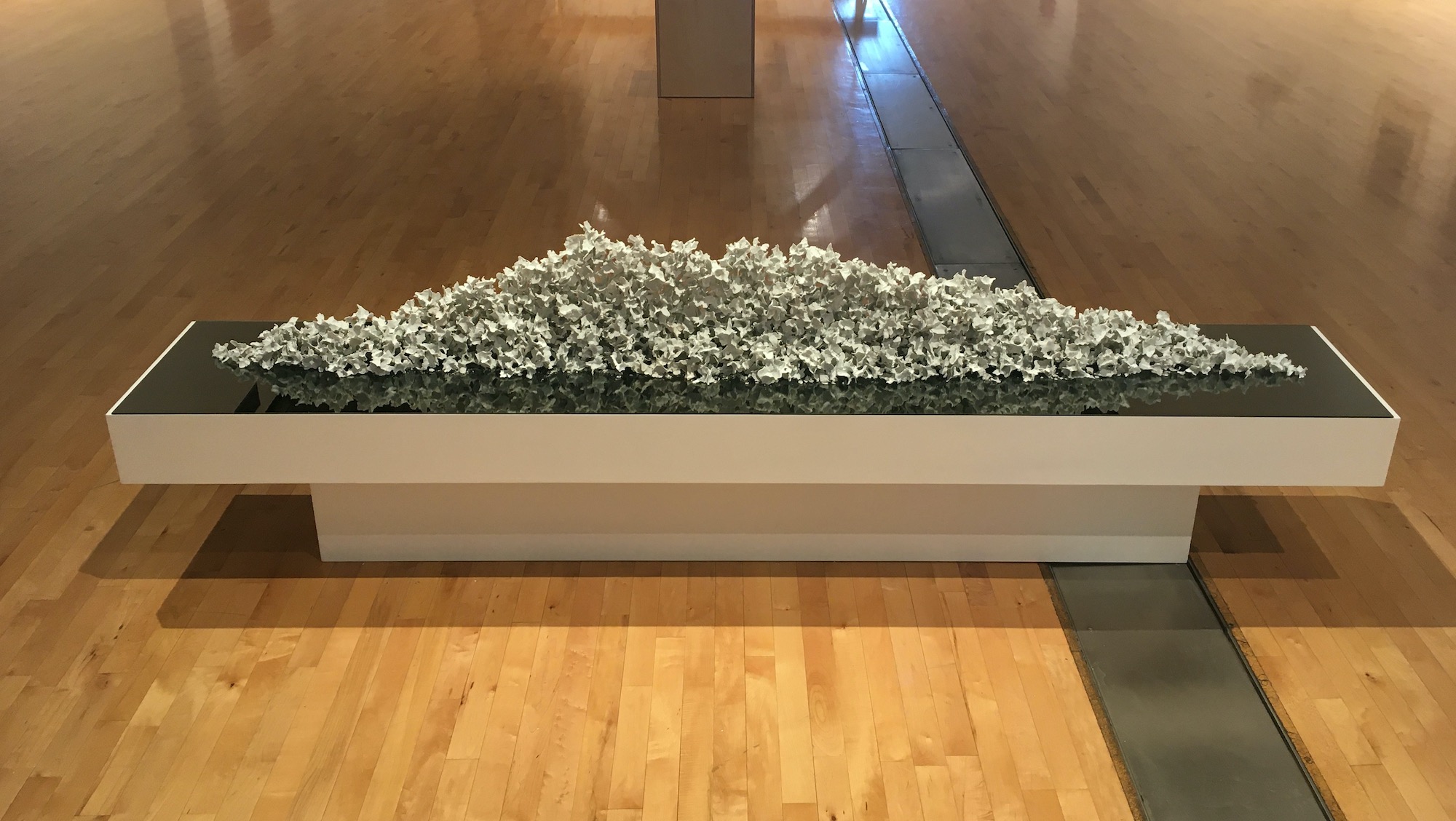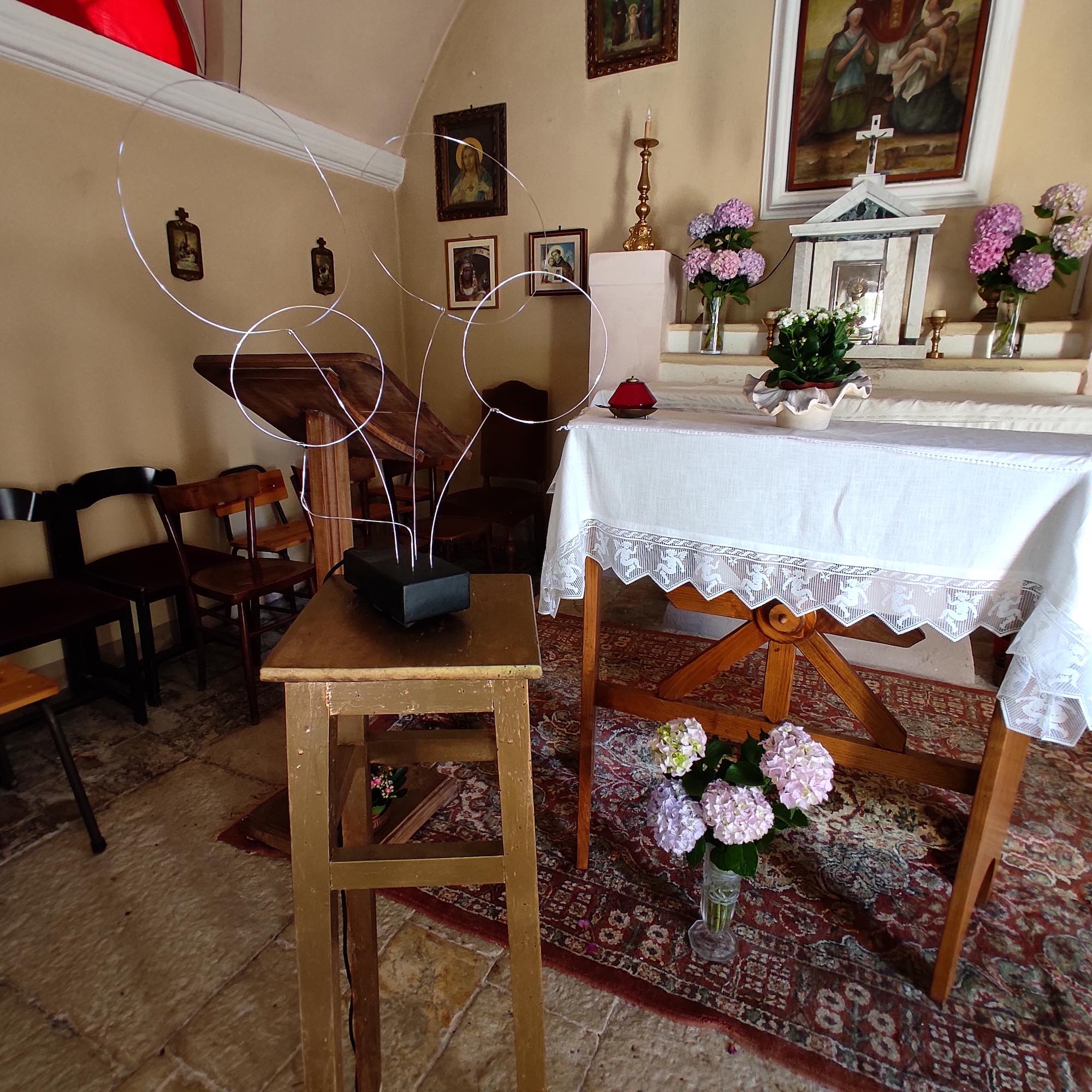Degrees of Granularity
Porcelain sculpture and interactive sound installation
In this post we present Degrees of Granularity, an interactive sound sculpture which is the result of a collaboration between artists Christine Cassano and Shomit Barua. This work combines tiny porcelain pieces with distance sensors and multichannel granular sound running on Bela.
Grains of Porcelain and Sound
Degrees of Granularity is a collaboration between artists Christine Cassano and Shomit Barua which was first shown at the Tempe Center for the Arts Gallery in 2021. The sculpture consists of 500+ hand-formed pieces of paper-thin, translucent porcelain which are delicately stacked atop a mirror and on top of each other. Motion reactive audio is derived from the friction of these bone-like pieces and from movements with the space where it is spatialised across multiple speakers.


The individual shape, weight and texture of the porcelain pieces causes their edges to catch; their arrangement requires balance, and when they rest they do so with precarious density. The noise the pieces make when they shift is both corrosive and harmonic — sometimes their edges crack, crumble and deteriorate, other times they resonate and ring. While this sculpture exists for the moment in a delicate stasis, the inevitable rearrangement over time will grind the porcelain into dust. For the rest of this post Shomit Barua will tell us about the experience of creating this work.
Creating this installation work
This collaborative partnership began as a 20-minute chance introduction over a campfire in the Coconino Forest. Our conversation veered towards synesthesia and how Christine had begun to explore sound in her visual work.
Recording porcelain
One of the things that drew me to Christine’s sculpture is how they express intense fragility and impermanence. Sometimes, there are little “porcelain avalanches” and the fact that their weight is the only thing holding these pieces together — that they can easily topple — infuses the sculpture with a tacit tension that I wanted to heighten through sound.
Initially I had a minute of hi-fi audio that would just run in its entirety whenever someone neared. To make it more generative and organic I chopped that original file into 500ms-1.5s clips that would then be sequenced randomly each time someone neared.
Material granularity and friction
This sequencing is basically a very coarse granular synthesis with a gate to only allow one grain to be articulated at a time. The “pure grain” comes out of one of four directional speakers built into the pedestal of the sculpture. I talk through the Pure Data patch created for the installation in the video below.
That same grain is echoed a second later with randomly selected effects from a combination of four speakers 15ft up in the atrium; the channel selection and panning between speakers is entirely dictated by the radial location of the person in relation to the sculpture which is detected by the distance sensors.


The HC-SR04 ultrasonic distance sensors connected up to Bela with the Audio Expander.
The sounds of the precarious shifting of the sculpture, combined with the implications of the shifting spatiality are designed to disorient and heighten the sense of fragility of the sculptural stack.
Construction
The installation consists of 500+ porcelain pieces, a 1.5ft x 6ft x 2.5ft pedestal with mirror top, a Bela Starter Kit with Audio Expander, 8 ultrasonic distance sensors, an 8 channel audio amplifier and 8 speakers.

The hardware used in this installation.
The pedestal has the Bela board installed underneath and 8 ultrasonic sensors mounted on the base of the pedestal. These sensors give a radial description of the position of people within the gallery in relation to the sculpture. When someone nears the sculpture, the sculpture emits a generative sonic response to their proximity. It then “throws” the sound to peripheral satellite speakers, giving a sensation of distance.
These sounds are spontaneously generated from a recording of the porcelain pieces cascading and crinkling against each other, so when the sound is digitally formed in response to the proximity of the person it heightens the inherent tension of the stacked porcelain pieces.
About Shomit Barua

Shomit Barua is an intermedia artist specializing in ecoacoustics, responsive environments, and emergent narratives. His work is rooted in poetry and architecture, reflecting their shared tenets of contained space, economy of materials, and movement that is both physical and emotional. Combining novel technologies with esoteric programming languages, he blurs the line between installation and performance by employing sound, object, and image. Digital and analog techniques are fused to investigate his core subject: the presence of the mind and body in a physical space.
Shomit is a doctoral researcher at ASU’s School of Arts, Media, and Engineering. He also holds an MFA in Poetry from Bennington College and teaches writing at Arizona State University. More of his work can be found at shomitbarua.com




